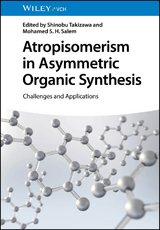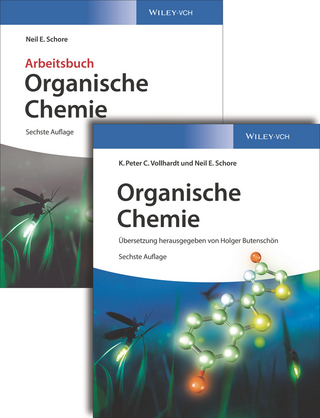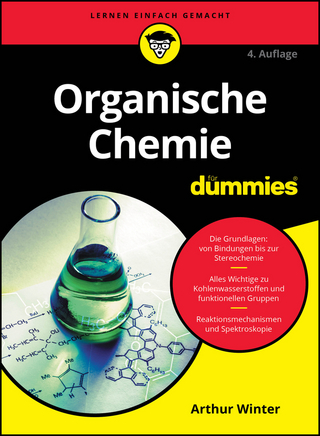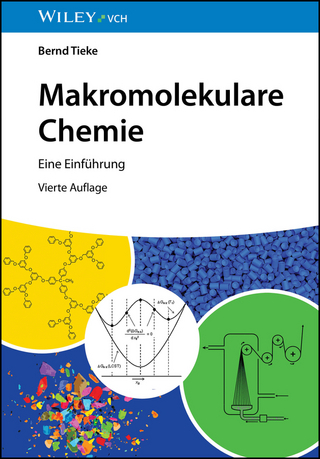Atropisomerism in Asymmetric Organic Synthesis
Wiley-VCH (Verlag)
978-3-527-35283-8 (ISBN)
Shinobu Takizawa is Associate Professor at the Institute of Scientific and Industrial Research (SANKEN) and AI Research Center at Osaka University (Japan). He received his Ph.D. in chemistry at the Graduate School of Pharmaceutical Science, Osaka University in 2000. From 2006 to 2008 he did postdoctoral studies at The Scripps Research Institute (USA) with Professor Dale L. Boger. He received the Daiichi Pharmaceutical Co. Ltd. Award in Synthetic Organic Chemistry, Japan (2000), the Pharmaceutical Society of Japan Award for Young Scientists (2009), the Daiichi-Sankyo Co. Ltd. Award in Synthetic Organic Chemistry, Japan (2009), the Osaka University Presidential Award for Encouragement in Research (2015) and the Pharmaceutical Society of Japan Award for Divisional Scientific Promotion (2019). His current research interest focuses on developing sustainable synthetic reactions with machine learning optimization. He is the author of more than 125 articles. Mohamed Salem is a research associate at the Institute of Scientific and Industrial Research at Osaka University. He graduated from the Faculty of Pharmacy, Suez Canal University (Egypt) in 2017, and received his Ph.D. in chemistry at the Graduate School of Science, Osaka University in 2022 under the direction of Professor Hiroaki Sasai and Professor Takayoshi Suzuki. Mohamed was awarded the Japanese Government Scholarship (MEXT) in 2019. His current research interest is designing and synthesizing CPL-responsive SOMs using electrochemistry, machine-learning-assisted optimization of reaction parameters, and asymmetric catalysis.
Preface
PART I ATROPOSELECTIVE SYNTHESIS
1 Introduction
1.1. Molecular chirality and atropisomerism
1.2. Atropisomerism in asymmetric organic synthesis
1.3. Atropisomerism: Challenges and applications
2 Iron- and Ruthenium-catalyzed Atroposelective Synthesis of Axially Chiral Compounds
2.1. Introduction
2.2. Oxidative homocoupling of 2-naphthols to BINOL and its derivatives
2.3. Oxidative cross-coupling of 2-naphthols to asymmetric BINOLs
2.4. Oxidative spirocyclization of 2-naphthols
2.5. Conclusion
3 Vanadium-catalyzed Atroposelective Coupling of Arenols and Application in the Synthesis of Polycyclic Heteroaromatics PHAs
3.1. Introduction
3.2. Chiral vanadium catalysis in homo-coupling of hydroxycarbazoles
3.3. Chiral vanadium catalysis in hetero-coupling of hydroxycarbazole with 2-naphthols
3.4. Enantioselective synthesis of oxa[9]helicenes via chiral vanadium complex-catalyzed homo-couplings of polycyclic phenols
3.5. Enantioselective synthesis of oxaza[7]dehydrohelicenes via chiral vanadium complex-catalyzed hetero-couplings of 3-hydroxycarbazoles and 2-naphthols
3.6. Summary and Conclusion
4 Atroposelective Suzuki?Miyaura coupling towards Axially Chiral Biaryls: Mechanistic Insight
4.1. Introduction
4.2. Mechanism insight of SMC reaction and enantiodetermining step
4.3. Asymmetric SMC reaction
4.4. Conclusion
5 Organocatalytic Enantioselective Formation of Atropisomers
5.1. Introduction
5.2. Aminocatalysis
5.3. Brønsted base catalysis
5.4. Phase Transfer Catalysis
5.5. Chiral Phosphoric Acids
5.6. Conclusions
6 Synthesis of Atropisomers via Enantioselective Ring-Opening Reactions
6.1. Introduction
6.2. Asymmetric ring-opening of biaryl lactones and its derivatives
6.3. Asymmetric ring-opening reactions via C-I bond cleavage
6.4. Asymmetric ring-opening reactions via C-N and C-P bonds cleavage
6.5. Asymmetric ring-opening reactions via C-C and C-Si bonds cleavage
6.6. Asymmetric ring-opening reactions via C-O and C-S bonds cleavage
6.7. Oriented asymmetric ring-opening via transient pentacyclic metal species
6.8. Summary and Conclusions
PART II CHALLENGES AND APPLICATIONS
7 Axially Chiral Ligands and Catalysts Derived from Atropisomeric Binaphthyl Structures
7.1. Introduction
7.2. Chiral ligands derived from BINOLs
7.3. Chiral ligands derived from BINAMs
7.4. Chiral ligands derived from NOBINs
7.5. Chiral organocatalysts derived from BINOLs
7.6. Chiral organocatalysts derived from BINAMs
7.7. Chiral organocatalysts derived from NOBINs
7.8. Chiral ligands and catalysts derived from other Binaphthyl motifs
7.9. Summary and Outlook
8 Multinuclear Zinc Catalysts with Axially Chirality
8.1. Pioneering works on BINOL-Zn System
8.2. Enantioselective addition reaction of dialkylzinc to aldehydes using BINOL additive
8.3. Catalytic asymmetric alkynylation of aldehydes
8.4. Catalytic asymmetric Diels-Alder reaction
8.5. Catalytic asymmetric epoxidation of enones
8.6. Catalytic asymmetric direct Aldol reaction
8.7. Catalytic asymmetric iodofunctionalization of alkenes
8.8. Conclusions
9 Binaphthyl-based Chiral DMAP Derivatives in Enantioselective Transformations
9.1. Introduction
9.2. Binaphthyl-based chiral DMAP derivatives
9.3. Intramolecular acyl transfer reactions
9.4. Intermolecular acyl transfer reactions
9.5. Summary and Conclusions
10 Catalytic Atroposelective Oxidative Coupling in Natural Product Synthesis
10.1. Introduction
10.2. Copper-catalyzed asymmetric oxidative coupling to construct a chiral axis
10.3. Vanadium-catalyzed asymmetric oxidative coupling to construct a chiral axis
10.4. Enzymatic strategies to synthesize natural products via atroposelective coupling
10.5. Conclusion
11 Atropisomerism in Drug Discovery and Development
11.1. Introduction
11.2. Configuration assignment of atropisomeric drugs
11.3. Classification of atropisomeric drugs according to the rotational energy barrier
11.4. Analysis of atropisomeric drugs across the pharmaceutical market drugs
11.5. Introducing atropisomerism to modulate selectivity
11.6. Challenges for atropisomerism within drug discovery
11.7. Conclusions
| Erscheinungsdatum | 27.11.2024 |
|---|---|
| Verlagsort | Berlin |
| Sprache | englisch |
| Maße | 170 x 244 mm |
| Gewicht | 666 g |
| Themenwelt | Naturwissenschaften ► Chemie ► Organische Chemie |
| Schlagworte | Chemie • Chemistry • Chiralität (Chemie) • Homogene Katalyse • Homogeneous catalysis • Methods - Synthesis & Techniques • Organische Chemie • Organische Chemie / Methoden, Synthesen, Verfahren • Pharmaceutical & Medicinal Chemistry • Pharmazeutische u. Medizinische Chemie |
| ISBN-10 | 3-527-35283-X / 352735283X |
| ISBN-13 | 978-3-527-35283-8 / 9783527352838 |
| Zustand | Neuware |
| Informationen gemäß Produktsicherheitsverordnung (GPSR) | |
| Haben Sie eine Frage zum Produkt? |
aus dem Bereich




